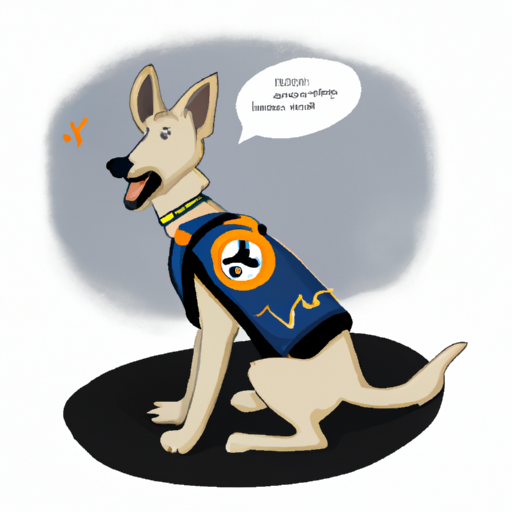Canine companions possess an uncanny ability to sense seizures in humans. This piece will dive into the mystery behind this phenomenon, exploring the science and research that shed light on how dogs can predict and respond to a seizure in their human companion.
Understanding Seizures
Seizures are sudden, uncontrolled electrical disturbances in the brain. They can cause a wide range of symptoms, from brief lapses in attention to severe physical convulsions. While the cause of seizures can vary, they’re often associated with conditions like epilepsy, brain injuries, or neurological disorders.
As a caregiver, understanding seizures is the first step to providing the best care possible. This involves:
- Recognizing the signs of a seizure.
- Understanding the triggers.
- Knowing how to respond during and after a seizure.
Dogs and Their Sensory Abilities
Dogs have a remarkable set of sensory abilities that far exceed our own.
- Their sense of smell, for example, is estimated to be between 10,000 to 100,000 times more sensitive than ours.
- Dogs’ hearing abilities also surpass ours, being able to hear higher frequencies and at four times the distance.
These enhanced senses, combined with their innate ability to read human behavior, make dogs uniquely equipped to sense seizures.
The Science Behind Dogs Sensing Seizures
While the exact mechanism by which dogs sense seizures is still under investigation, there are several prevailing theories:
- Dogs might detect a change in scent or body language before a seizure.
- They may hear a change in our heartbeat or breathing pattern.
- Some researchers suggest dogs might even be sensitive to the electrical changes in the brain before a seizure.
| Theory | Description |
|---|---|
| Change in Scent | Dogs’ sensitive noses might detect subtle changes in our body odor. |
| Change in Body Language | Dogs might pick up on unconscious changes in our behavior or movement. |
| Change in Heartbeat or Breathing | Dogs’ acute hearing could pick up changes in our internal rhythms. |
| Electrical Changes in Brain | Some hypothesize dogs might be sensitive to the bioelectric changes that occur before a seizure. |
Training Dogs to Respond to Seizures
Dogs’ ability to sense seizures isn’t just remarkable, but it can also be life-saving. With the right training, dogs can be taught to alert their owners to an impending seizure, giving them time to get to a safe place or alert someone nearby.
Training a dog to respond to seizures typically involves the following steps:
- Familiarizing the dog with the scent of the owner during a seizure.
- Teaching the dog a specific response when they detect this scent.
- Reinforcing this behavior through consistent training and positive reinforcement.
Frequently Asked Questions
Q: Can all dogs sense seizures?
A: While many dogs have shown the ability to sense seizures, not all dogs might have this ability. It often depends on the individual dog and their relationship with their owner.
Q: How can I train my dog to sense seizures?
A: Training a dog to sense seizures can be a complex process and is best done with a professional trainer or organization that specializes in seizure alert dogs.
Q: How reliable are dogs at predicting seizures?
A: The reliability of dogs in predicting seizures can vary. Some dogs have been reported to predict seizures with high accuracy, while others may not be as consistent.
Q: Can dogs be trained to respond to other medical conditions?
A: Yes, dogs can be trained to respond to a variety of medical conditions, including diabetes, panic attacks, and even some forms of cancer.
This intriguing interplay between man’s best friend and our health continues to be a subject of ongoing research. As we learn more, we can harness this special bond for the benefit of those living with seizures and other medical conditions.



